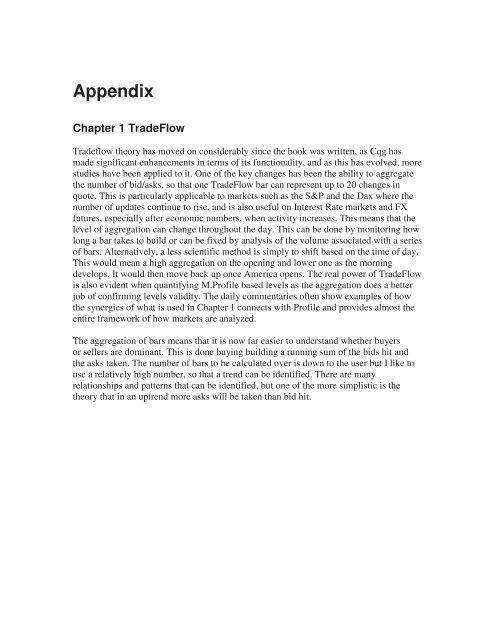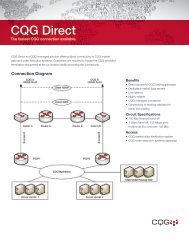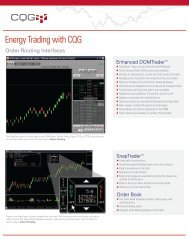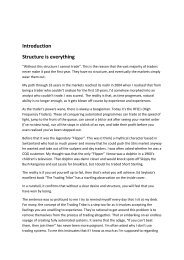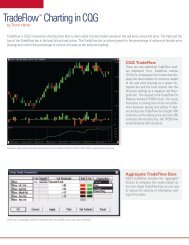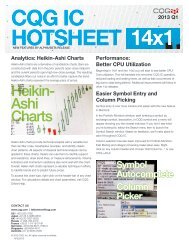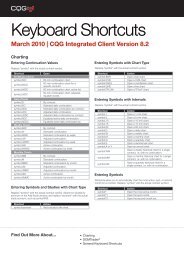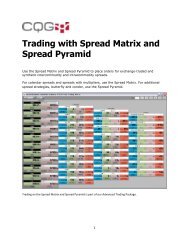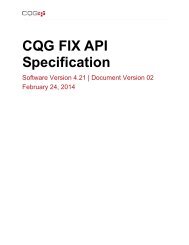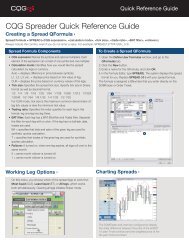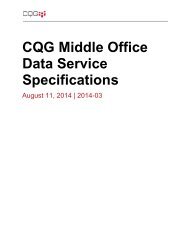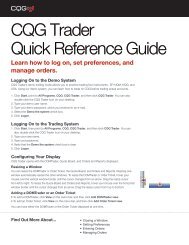Trading Time. - CQG.com
Trading Time. - CQG.com
Trading Time. - CQG.com
You also want an ePaper? Increase the reach of your titles
YUMPU automatically turns print PDFs into web optimized ePapers that Google loves.
Appendix<br />
Chapter 1 TradeFlow<br />
Tradeflow theory has moved on considerably since the book was written, as Cqg has<br />
made significant enhancements in terms of its functionality, and as this has evolved, more<br />
studies have been applied to it. One of the key changes has been the ability to aggregate<br />
the number of bid/asks, so that one TradeFlow bar can represent up to 20 changes in<br />
quote. This is particularly applicable to markets such as the S&P and the Dax where the<br />
number of updates continue to rise, and is also useful on Interest Rate markets and FX<br />
futures, especially after economic numbers, when activity increases. This means that the<br />
level of aggregation can change throughout the day. This can be done by monitoring how<br />
long a bar takes to build or can be fixed by analysis of the volume associated with a series<br />
of bars. Alternatively, a less scientific method is simply to shift based on the time of day.<br />
This would mean a high aggregation on the opening and lower one as the morning<br />
develops. It would then move back up once America opens. The real power of TradeFlow<br />
is also evident when quantifying M.Profile based levels as the aggregation does a better<br />
job of confirming levels validity. The daily <strong>com</strong>mentaries often show examples of how<br />
the synergies of what is used in Chapter 1 connects with Profile and provides almost the<br />
entire framework of how markets are analyzed.<br />
The aggregation of bars means that it is now far easier to understand whether buyers<br />
or sellers are dominant. This is done buying building a running sum of the bids hit and<br />
the asks taken. The number of bars to be calculated over is down to the user but I like to<br />
use a relatively high number, so that a trend can be identified. There are many<br />
relationships and patterns that can be identified, but one of the more simplistic is the<br />
theory that in an uptrend more asks will be taken than bid hit.


